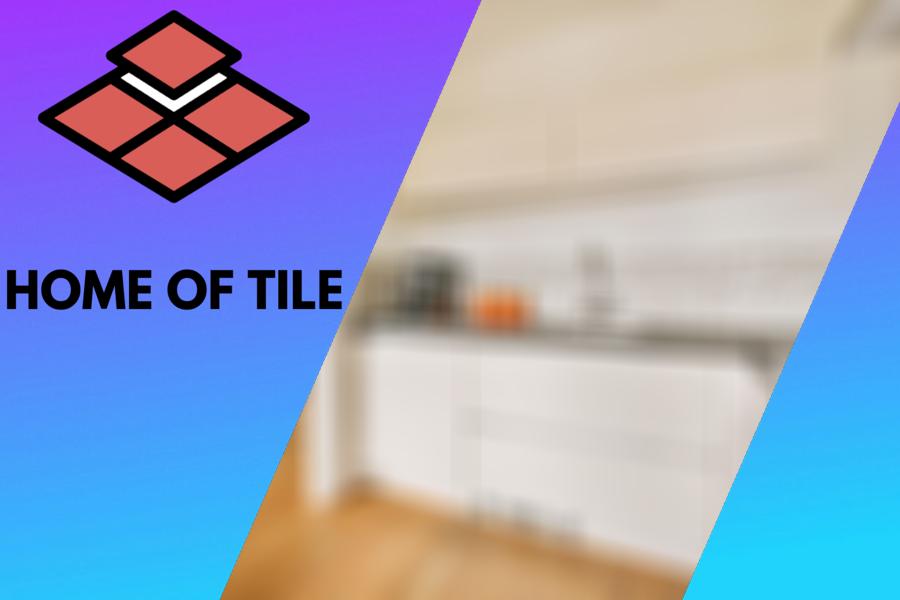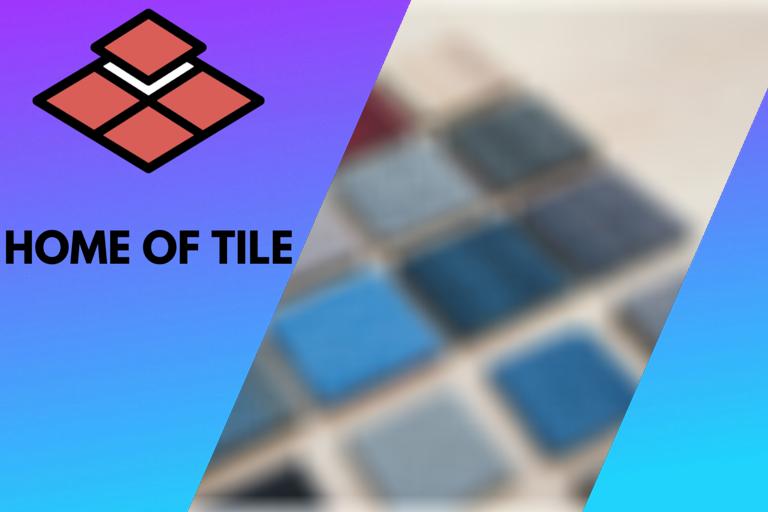Schluter Ditra Installation, step by step. With tips and video
Are you tired of dealing with cracked tiles and damaged flooring? Look no further for a reliable solution, as our latest blog post guides you through a foolproof methodSchluter Ditra installation. This innovative, uncoupling membrane prevents tile damage and promises long-lasting, beautiful results.
Schluter ditra installation:
The Schluter Ditra Installation Guide provides step-by-step instructions for installing Schluter Ditra matting, a popular choice for tile installations due to its uncoupling, waterproofing, and vapor management properties. The guide covers substrate preparation, layout planning, cutting and installing the matting, applying thinset mortar, installing tiles, and grouting the tile.
Homeowners and professional installers can achieve a high-quality tile surface with long-lasting results by following these steps.

Read on as I delve deep into the Schluter Ditra installation, guiding you through its purpose, application process, and necessary tools. Gain valuable insight from expert tips to ensure a seamless, waterproof, and durable finish for your tile surfaces.
Contents
- 1 Schluter Ditra Installation Guide
- 1.1 • Materials and Tools Required
- 1.2 • Step 1: Substrate Preparation
- 1.3 • Step 2: Plan the Layout
- 1.4 • Step 3: Cut the Schluter Ditra Matting
- 1.5 • Step 4: Mix and Apply the Thinset
- 1.6 • Step 5: Install the Schluter Ditra Matting
- 1.7 • Step 6: Install the Tile
- 1.8 • Step 7: Grouting the Tile
- 1.9 • Conclusion
- 2 Is it Possible to Install DITRA Over Plywood?
- 3 Is installing DITRA over the Oriented Strand Board (OSB) possible?
- 4 Is it possible to commence tiling immediately after installing DITRA?
- 5 What is the appropriate method for laying down DITRA?
- 6 Is It Possible to Install DITRA Over Plywood Surface?
Schluter Ditra Installation Guide
Schluter Ditra is a popular choice for tile installation due to its uncoupling, waterproofing, and vapor management properties. If you plan on installing tiles in your home or for a client, this guide will take you through the step-by-step process for a successful Schluter Ditra installation.
• Materials and Tools Required
Before starting, gather the necessary materials and tools for the installation:
- Schluter Ditra matting
- Thinset mortar
- Tile
- Grout
- Tape measure
- Utility knife or scissors
- Notched trowel
- Rubber grout float
- Bucket
- Mixing paddle
- Sponge
- Level
- Tile spacers
• Step 1: Substrate Preparation
Before installing Schluter Ditra, ensure the substrate is clean, flat, and level. Remove any debris, dirt, or dust. Check for surface irregularities, and make adjustments as needed. If the substrate is made of wood, ensure it is structurally sound and securely fastened to the floor joists.
For concrete substrates, ensure the surface is flat, clean, and free from cracks or other damage. Use a self-leveling compound or patch the area with appropriate materials in uneven or damaged substrates cases.
• Step 2: Plan the Layout
Measure the area you are installing the Schluter Ditra matting and tiles. Determine the best way to lay out the matting, ensuring that mat edges and seams are properly aligned and allowing for any cuts or adjustments necessary.
Also, plan the tile layout to minimize cuts and waste. Determine the starting point for the tile installation, usually the center or an easily visible straight edge. Consider any architectural features of the room, or focal points, when deciding on the tile layout.
• Step 3: Cut the Schluter Ditra Matting
Use the utility knife or scissors to cut the Schluter Ditra matting based on your layout plan, leaving a 1/4-inch gap between the mat edges and the walls for movement expansion. Be cautious when cutting to avoid damaging the mat’s structure.
• Step 4: Mix and Apply the Thinset
Following the manufacturer’s instructions, mix the thinset mortar in a bucket using a mixing paddle. Be sure to read the packaging for the specific mortar-to-water ratio required.
Use the notched trowel to apply the thinset to the substrate. Hold the trowel at a 45-degree angle, ensuring consistent and even coverage. The size of the trowel’s notches will depend on the matting thickness and the substrate’s surface. Typically, a 1/4-inch square-notched trowel is recommended for standard installations.
• Step 5: Install the Schluter Ditra Matting
Lay the Schluter Ditra matting on the thinset with the textured side facing up. Firmly press down on the mat, ensuring proper contact with the thinset. You can use a wooden or rubber float to assist with pressing the mat into the mortar, enabling full coverage.
Overlap the seams between adjacent mat pieces, ensuring the grid pattern lines up. Remember the 1/4-inch gap between the edges of the mat and walls.
• Step 6: Install the Tile
Allow the thinset to set under the Schluter Ditra matting as per the manufacturer’s recommended waiting time. Once the thinset is cured, mix a new batch of thinset for the tile installation using the same method as before.
Using the notched trowel, apply the thinset to the mat, spreading it evenly at a 45-degree angle. Place the tiles, using tile spacers for consistent spacing, and press down firmly to ensure proper adhesion to the mat. Continuously check the tiles with a level to ensure a flat and even installation.
• Step 7: Grouting the Tile
Allow the thinset to cure as per the manufacturer’s instructions. Once the thinset has completely dried, mix the grout as directed by the manufacturer. Using a rubber grout float, apply the grout on the tile’s surface, pushing it into the tile joints. Remove any excess grout from the tile surface with the grout float at a 45-degree angle.
After waiting for the grout to set for approximately 20-30 minutes (or the recommended time by the manufacturer), use a damp sponge to clean the tile surfaces.
Allow the grout to cure for the recommended time before walking on or placing any heavy objects on the floor.
• Conclusion
Schluter Ditra installation is a straightforward process that leads to a high-quality tile surface, offering uncoupling, waterproofing, and vapor management benefits. Whether you are a homeowner or a professional installer, following these steps will ensure a successful and long-lasting tile installation.
Is it Possible to Install DITRA Over Plywood?
When planning a tile installation project, homeowners and contractors often wonder about the best underlayment options. In particular, many ask, “Can I put DITRA over plywood?” The short answer is yes; DITRA is an excellent underlayment choice for use over plywood substrates.
I will discuss the key factors and benefits of using DITRA over plywood, the correct installation process, and important considerations to remember to achieve a top-quality, long-lasting tile installation.
• What is DITRA?
DITRA is a polyethylene membrane produced by Schluter Systems, a German-based company specializing in tile installation products. This innovative membrane is designed to act as an uncoupling layer between the tile and the subfloor, minimizing the risk of tile cracking due to movement and stresses in the subfloor.
DITRA also provides waterproofing and vapor management benefits, making it suitable for use in areas with high moisture levels, such as bathrooms and kitchens.
• Why Use DITRA?
There are several reasons why DITRA is an excellent underlayment choice for tile installations over plywood:
– Crack Isolation
Plywood subfloors are prone to expansion and contraction, resulting in movement that can cause stress on tile installations. DITRA, being an uncoupling membrane, absorbs this movement and prevents it from causing cracks in the tile and grout.
– Waterproofing
DITRA’s waterproof layer makes it an ideal choice in wet areas like bathrooms and kitchens, where moisture can seep through the plywood and cause mold or rot.
– Vapor Management
The unique structure of DITRA allows for the passage of vapor through the membrane, reducing the risk of moisture buildup beneath the tiles and ensuring a healthier living environment.
• How to Install DITRA Over Plywood
To install DITRA over plywood, it is essential to follow the proper process to ensure a successful and durable tile installation. Here are the steps to follow:
– Prepare the Plywood Substrate
Before installing DITRA, it is essential to ensure that the plywood substrate is clean, even, dry, and free of debris or loose material. Level any low spots and sand down high spots to achieve a flat surface.
Additionally, ensure that the plywood is securely fastened to the subfloor, with screws placed at regular spacing, typically 6-8 inches apart.
– Apply a Layer of Thin-Set Mortar
Using a 1/4″ x 3/16″ V-notched trowel, apply a layer of modified thin-set mortar to the plywood substrate. This will help bond the DITRA membrane to the substrate. Schluter Systems recommends using a mortar that meets the ANSI A118.11 standard for modified thin-set mortars.
– Lay the DITRA Membrane
Carefully lay the DITRA membrane onto the freshly applied thin-set mortar, with the fleece side facing down. Press the membrane into the mortar using a grout float or a similar tool, ensuring full coverage and the removal of any air bubbles.
– Allow Mortar to Set
Let the thin-set mortar cure and bond the DITRA membrane to the plywood subfloor before proceeding with the next steps. This typically takes 24 hours but may vary depending on temperature and humidity.
– Apply Thin-Set to DITRA and Install Tiles
Once the DITRA is securely bonded to the plywood, you can install the tile. The manufacturer recommends applying unmodified thin-set mortar to the DITRA using a 1/4″ x 1/4″ square-notched trowel. Lay the tiles over the mortar and gently press them into place, ensuring proper adhesion.
– Grout and Seal
After allowing the mortar to set, typically for 24 hours, finish the tile installation by grouting the joints and applying a sealer to the tile and grout, if necessary.
• Final Thoughts and Recommendations
DITRA is an excellent underlayment choice for tile installations over plywood, offering numerous benefits such as crack isolation, waterproofing, and vapor management. Following the above steps, you can achieve a top-quality, long-lasting tile installation over a plywood substrate.
As a final recommendation, take the time to consult the manufacturer’s guidelines and consult with a professional tile installer when in doubt, as each project has unique requirements and factors to consider.
With thoughtful planning and careful execution, installing DITRA over plywood can result in a successful tile installation that you can enjoy for years.
Is installing DITRA over the Oriented Strand Board (OSB) possible?
OSB (Oriented Strand Board) is a common subfloor material used in residential and commercial constructions. It is inexpensive, durable, and easy to install. On the other hand, DITRA is a polyethylene membrane that serves as an uncoupling layer between the subfloor and tiles, preventing cracks and movement from transferring to the tiles.
The question that arises is: can you install DITRA over OSB? The answer is yes, but with certain precautions and guidelines to follow.
I will discuss the benefits of using DITRA, the necessary preparation for OSB, and the installation process of DITRA over OSB.
• Benefits of Using DITRA
DITRA is popular among professionals and homeowners because it offers multiple tile installation benefits. Some of these benefits include:
- Uncoupling: DITRA’s unique design allows it to absorb and distribute movement between the subfloor and tiles, preventing cracks and damage.
- Waterproofing: The polyethylene material of DITRA acts as a waterproof barrier, protecting the subfloor and other building components from water damage.
- Vapor management: DITRA’s breathable design escapes moisture and vapor, preventing mold growth and overall tile failure.
- Load distribution: DITRA effectively distributes weight from heavy loads and foot traffic, ensuring tile stability and longevity.
• Preparing OSB for DITRA Installation
Before installing DITRA over OSB, it is crucial to prepare the subfloor to ensure a successful installation. Consider the following steps:
– Ensure Proper Subfloor Thickness
For adequate support of the tile and the DITRA membrane, ensuring that the OSB subfloor has a minimum thickness of 23/32 inches is essential. This thickness will provide the necessary stability and prevent deflection, which can lead to tile failure.
– Check for Subfloor Damage
Inspect the OSB subfloor for any signs of damage, such as swelling, buckling, or water damage. If any issues are found, the damaged areas should be replaced or repaired before proceeding with the DITRA installation.
– Clean the OSB Surface
Before installing DITRA, the OSB subfloor must be clean and free of dirt, debris, grease, or any other substance that may interfere with the bond between the DITRA and the subfloor. Sweep or vacuum the surface as necessary.
• Installing DITRA Over OSB
Following the preparation of the OSB subfloor, you can proceed with the installation of DITRA. Use the following steps as a guide:
– Mix Modified Thin-set Mortar
Modified thin-set mortar is recommended for adhering to DITRA to OSB. Follow the manufacturer’s instructions to mix the mortar to the correct consistency.
– Apply Thin-set Mortar to OSB
Using a 1/4-inch x 3/16-inch V-notched trowel, spread the modified thin-set mortar on the OSB surface. Apply the mortar evenly, ensuring full coverage of the area where the DITRA will be installed.
– Lay DITRA Membrane
With the mortar in place, roll out the DITRA membrane over the OSB, embedding it in the thin-set mortar. Press the DITRA material firmly into the mortar, ensuring a strong bond with the OSB.
– Smooth Out Air Bubbles
Using a wooden or plastic float, smooth out any air bubbles trapped between the DITRA and OSB. This will ensure proper adhesion and prevent future issues with tile installation.
– Allow Mortar to Cure
Give the mortar time to cure, as specified by the manufacturer’s instructions. Avoid walking on the DITRA or applying additional weight to the subfloor during curing.
– Install Tiles Over DITRA
You can proceed with the tile installation with the DITRA securely adhered to the OSB. Use unmodified thin-set mortar to lay the tiles, following standard tile installation practices.
• Conclusion
In conclusion, installing DITRA over OSB can provide several benefits for your tile installation, including uncoupling, waterproofing, vapor management, and load distribution.
A successful and durable tile installation can be achieved by properly preparing the OSB subfloor and following the correct installation guidelines.
Material | Can Install DITRA? | Explanation |
|---|---|---|
OSB (Oriented Strand Board) | Yes | DITRA can be installed over OSB as long as certain conditions are met, such as using modified thin-set mortar to adhere the DITRA to the OSB and ensuring the OSB is structurally sound and properly fastened. |
Is it possible to commence tiling immediately after installing DITRA?
Many DIY and professional tilers wonder if installing tiles immediately after placing a DITRA membrane is possible. I aim to provide a comprehensive overview of this process, helping you understand the best practices for working with DITRA and offer expert tips and recommendations.
• What is DITRA?
DITRA is an uncoupling membrane manufactured by Schluter Systems, designed to prevent tiles from cracking due to subfloor movement.
Consisting of a polyethylene material with a grid-like structure, DITRA is an uncoupling membrane and acts as a waterproofing and vapor-management layer for tile installations.
• When to Install Tiles Over DITRA
While it may be tempting to begin tiling immediately after installing DITRA, it’s crucial to understand the factors that affect your project timeline. The two main concerns to consider are the type of thin-set mortar you’re using and the specific conditions of your installation area.
– Types of Thin-Set Mortar
Choosing the right thin-set mortar for your project is essential in determining the appropriate timeline for installing tiles over DITRA. Schluter Systems recommends using modified or unmodified thin-set mortar depending on the type of tile being installed.
- Modified Thin-Set Mortar: Recommended for moisture-sensitive and natural stone tiles, modified thin-set mortar contains additional polymers to provide better adhesion and flexibility. However, these additives can affect the drying time, which may require waiting up to 24 hours before placing your tiles on top of DITRA.
- Unmodified Thin-Set Mortar: Suitable for most ceramic and porcelain tiles, unmodified thin-set mortar dries more quickly than its modified counterpart, allowing you to proceed with tiling sooner. Depending on your project’s specific circumstances, you may be able to start tile installation within a few hours of placing DITRA using unmodified thin-set mortar.
– Installation Conditions
Certain environmental factors and conditions can influence the drying time of your thin-set mortar, ultimately affecting your tiling timeframe. Some of these factors include:
- Temperature: The drying process is usually slower in colder temperatures. Ideally, the installation area should be between 50F and 70F, allowing thin-set mortar to adequately cure before tile placement.
- Humidity: High humidity levels can slow the moisture’s evaporation in the thin-set mortar, potentially prolonging drying time. Ensure the installation area has proper ventilation, and consider using a dehumidifier if necessary.
- Substrate Porosity: The type of substrate, or the material beneath the DITRA membrane, can also affect drying times. More porous substrates, like wood, typically require less time for the thin-set mortar to cure than less porous materials, like concrete.
• Tips and Recommendations for Tiling Over DITRA
To ensure a successful installation, consider the following expert tips and recommendations when tiling over DITRA:
- Follow Manufacturer Guidelines: Always refer to the instructions and recommendations provided by the manufacturer of the DITRA membrane, thin-set mortar, and tiles to ensure proper installation timelines and methods.
- Perform a Bond Test: Before installing tiles, conduct a quick bond test by applying thin-set mortar to a small section of DITRA, allowing it to cure, and checking its adhesion. This can help you confirm that the thin-set mortar properly bonds with the DITRA membrane and provides a stable base for your tiles.
- Check for Complete Coverage: As you install your tiles, periodically lift them to ensure complete coverage of the thin-set mortar on the back of the tiles and the DITRA membrane. This helps prevent voids that could lead to tile movement and cracking.
- Ensure Flatness: Use a leveling system or check the flatness of your tiles periodically throughout the installation process. This helps prevent lippage or uneven tile edges, which can create an unsightly and potentially hazardous finished surface.
- Wait to Grout: Even if you can install your tiles immediately after placing DITRA, waiting for the thin-set mortar to completely cure before applying grout is essential. This typically takes 24-48 hours, but a stable and secure installation is necessary.
In conclusion, whether you can tile immediately after installing DITRA depends on the type of thin-set mortar you use and the specific installation conditions of your project.
By carefully considering these factors and following the expert tips, you can achieve a successful and long-lasting tile installation.
| Can you tile immediately after installing DITRA? | |
|---|---|
| Answer: | It is crucial to follow the manufacturer’s guidelines and recommendations for installing DITRA and any applicable local building codes to ensure a successful and long-lasting tile installation. |
| Note: | It is crucial to follow the manufacturer’s guidelines and recommendations for installing DITRA and any applicable local building codes to ensure a successful and long-lasting tile installation. |
What is the appropriate method for laying down DITRA?
DITRA, a popular brand of uncoupling membrane, is a must-have for any tile installation project. As a professional with years of experience, I highly recommend using DITRA for the best possible results.
I will cover key aspects of DITRA, from the materials and tools required to the actual steps involved in the installation process. Let’s dive in!
• Why Use DITRA
Allow me to quickly explain why DITRA is so crucial for your project. DITRA acts as a stress-relief layer between your tile flooring and the substrate beneath it. With its unique geometric design, DITRA can neutralize the stresses caused by materials expanding and contracting at different rates.
This helps prevent cracks and dislodgment, ultimately extending the life of your tile flooring.
• Materials You Need for Installing DITRA
Before I discuss the steps involved in putting down DITRA, let’s ensure you have all the necessary materials and tools on hand:
- DITRA membrane
- Modified or unmodified thin-set mortar (check DITRA’s guidelines for your specific installation)
- Notched trowel (preferably a square-notched design at 1/4″ x 1/4″ x 1/4″ in size)
- Utility knife or scissors to cut the DITRA membrane
- Grout float or wooden block to press DITRA firmly into the mortar
- Level or straight edge to verify evenness
- Rubber mallet, if deemed necessary for tapping DITRA into place
- Spacer wedges (recommended for keeping membrane flat during installation)
• Step-By-Step Guide to Installing DITRA
Now that you have everything you need let’s walk you through installing DITRA for your tile flooring project.
1. Preparing the Substrate
The first step is to ensure your substrate is clean, dry, and free of debris, dust, or moisture. Start by sweeping or vacuuming the area, ensuring no dirt or contaminants are left behind.
DITRA can be installed on various substrates, including plywood, OSB, concrete, and backer boards. Check the manufacturer’s guidelines to ensure your substrate is suitable for DITRA installation.
2. Cutting the DITRA Membrane to Size
Measure the area where you will install the DITRA membrane, taking note of any obstacles or irregular shapes that require cutting the membrane accordingly.
Cut the membrane to the desired size and shape using a utility knife or scissors. Make sure to always cut the membrane with the geometric pattern facing up.
3. Mix and Apply the Thin-Set Mortar
After preparing and cutting your DITRA membrane, it’s time to mix the thin-set mortar. Be sure to follow the mortar manufacturer’s instructions to achieve the proper consistency.
Using the 1/4″ x 1/4″ x 1/4″ notched trowel, apply the thin-set mortar to the substrate, holding the trowel at a 45-degree angle. Ensure that the ridges created by the notches are uniform in height.
4. Installing the DITRA Membrane
With the thin-set mortar applied, carefully lay the DITRA membrane over it, geometric side down. Press the membrane firmly into the mortar using a grout float or wooden block.
This will ensure proper adhesion between the membrane and the substrate. If you encounter any air bubbles, use a rubber mallet to tap them out gently.
5. Ensuring Flatness and Proper Alignment
Use a level or straight edge to verify the evenness of the installed DITRA membrane. If adjustments are necessary, lift the membrane, apply more thin-set mortar, and re-position the membrane accordingly. Ensure the membrane is flat and free of wrinkles or curling edges.
Use spacer wedges to maintain even spacing between the membrane and surrounding walls or obstacles.
6. Allowing the Mortar to Set
Once the DITRA membrane is in place, allow the thin-set mortar to fully set and cure before proceeding with the tile installation.
The curing time will vary depending on the type of mortar used but typically ranges from 12-24 hours. Check the mortar manufacturer’s guidelines for specific curing times.
• Final Thoughts
Installing DITRA might seem intimidating initially, but with the right materials and tools and following the steps outlined in this guide, you will achieve a professional-looking and durable tile installation.
Remember, the key to success is meticulous preparation and attention to detail. Good luck with your project!
Step | Instructions |
|---|---|
1 | Place the DITRA membrane fleece-side down into the thin-set mortar and press it firmly with a float or roller to ensure full contact. |
2 | Measure and cut the DITRA membrane to fit the area where it will be installed. |
3 | Mix a modified thin-set mortar according to the manufacturer’s instructions. |
4 | With a 1/4″ x 3/16″ (6 mm x 5 mm) V-notched trowel or the DITRA trowel, apply the thin-set mortar to the substrate. |
5 | Place the DITRA membrane fleece-side down into the thin-set mortar and press it firmly with a float or roller to ensure full contact with the mortar. |
6 | Place the DITRA membrane fleece-side down into the thin-set mortar and press it firmly with a float or roller to ensure full contact. |
Is It Possible to Install DITRA Over Plywood Surface?
Regarding tile installations, one of the main concerns is ensuring a strong and lasting bond between the tile and the substrate. With the increasing popularity of the DITRA uncoupling membrane system, many DIY enthusiasts and professionals are debating, “Can you install DITRA over plywood?”.
Let’s delve into this topic and discuss the pros and cons of installing DITRA over plywood and its best practices and alternatives.
• Why Consider DITRA for Tile Installation
The DITRA uncoupling membrane system, developed by the German company Schluter Systems, is an innovative design that effectively protects against tile cracking and delamination.
It is specifically engineered for use with ceramic and stone tile and offers the following benefits:
- Crack isolation: The membrane’s unique design effectively uncouples the tile from its substrate, allowing for movement absorption and preventing the transfer of stresses to the tile.
- Waterproofing: The polyethylene membrane also serves as a waterproofing layer, protecting the substrate from water damage and preventing the growth of mold and mildew.
- Vapor management: DITRA allows moisture evaporation from the substrate, decreasing the potential for efflorescence and other moisture-related issues.
- Ease of installation: The system is relatively easy to install and ensures a strong bond between the tile and the substrate.
• Installing DITRA Over Plywood
It is a common misconception that DITRA cannot be installed over plywood. In fact, DITRA can indeed be installed over plywood, but it requires some specific considerations and preparations.
Before beginning the installation process, it is essential to adhere to the following best practices:
– Choosing the Right Plywood
Selecting the right type of plywood is essential for a successful installation. Plywood comes in various grades, and choosing one that meets the requirements for tile installations is crucial. The plywood should be:
- Exterior Grade: Ensure the plywood is rated for exterior use, as this type is less susceptible to moisture damage.
- 5/8″ or Thicker: The plywood should be at least 5/8″ thick to provide adequate support for the tile and help prevent deflection.
– Preparing the Plywood Substrate
Before installing DITRA over plywood, the substrate must be adequately prepared to ensure a strong bond. This includes:
- Clean: Free the surface of any dust, dirt, or loose particles.
- Flat: Level the plywood, ensuring no significant gaps or humps. If necessary, sand down high spots or add leveling compound to low spots.
- Secure: Ensure the plywood is secured to the floor joists with screws, placed 8″ apart along the edges and 12″ apart in the field.
– Applying the Thinset Mortar
It is important to use the right type of thinset mortar when installing DITRA over plywood. Schluter Systems recommends using a modified thinset mortar that meets ANSI A118.11 standards. This mortar type is designed to provide a strong bond even when applied to plywood.
- Comb: Apply the mortar with a 1/4″ x 3/16″ V-notched trowel, ensuring that the mortar is evenly combed onto the plywood surface.
- Embed: Carefully position the DITRA membrane over the wet mortar, and use a float or roller to press it firmly into place. This will help eliminate air pockets and ensure a strong bond.
- Cure: Allow the thinset to cure for at least 24 hours before installing the tile.
• Alternatives to Plywood
While installing DITRA over plywood is a widely accepted practice, it may not always be the ideal choice for every project. Some alternatives to consider include the following:
- Cement Backer Board: A cement-based substrate with excellent moisture resistance and a strong bond for tile installations.
- OSB (Oriented Strand Board): Similar to plywood but composed of smaller wood strands, OSB can provide a suitable substrate for DITRA installations when properly prepared.
- Conventional Mortar Bed: A traditional approach to tile installation consisting of a wire-reinforced mortar bed applied over a waterproof membrane.
• In Conclusion
The answer to “Can you install DITRA over plywood?” is a definitive yes, provided the necessary precautions and best practices are followed. By selecting the right materials and adhering to the proper installation guidelines, DITRA can apply over plywood, ensuring a durable and lasting bond for your tile installation project.
However, it is essential to consider the unique requirements of each project and assess if plywood is the best option or if an alternative substrate would be more beneficial.
| Can you install DITRA over plywood? | |
|---|---|
| Answer | Yes, you can install DITRA over plywood, as long as the plywood is structurally sound and properly prepared. |








